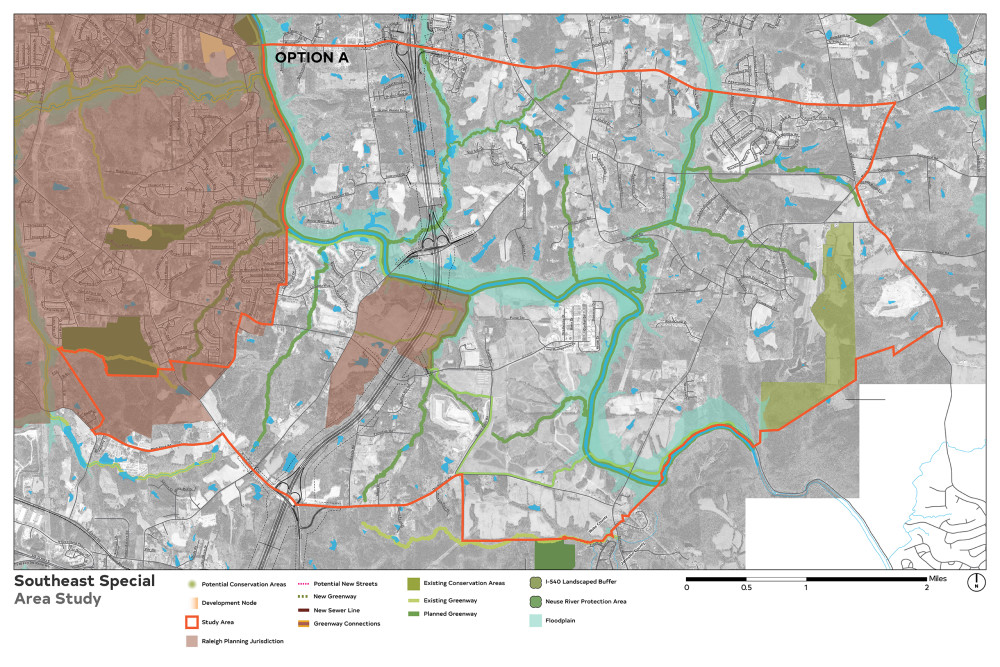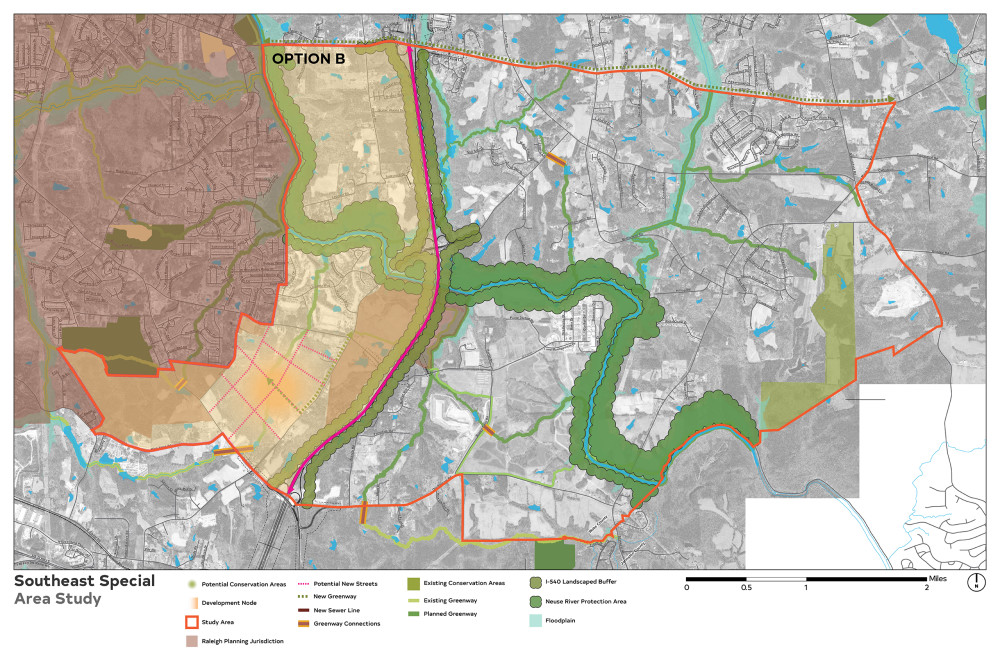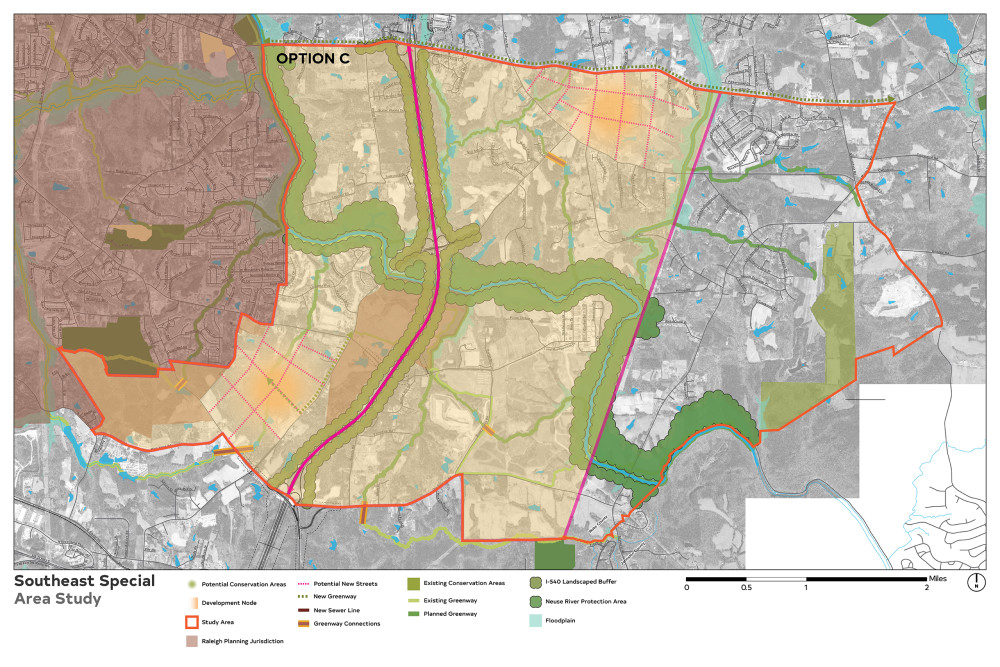Southeast Special Area Study ETJ Options Phase 2 Survey
Southeast Special Area Study ETJ Options Phase 2 Survey
The Southeast Special Area Study is a planning project focused on an area in southeastern Wake County where new infrastructure is being built and development pressure is increasing. While most of the area is currently outside the bounds of Raleigh's limits, there is a possibility that residents in the study area may one day decide to annex and become a part of Raleigh. In June 2019, the City of Raleigh held several listening sessions and released a previous survey to understand what residents wanted for the future of this area. We've come up with some ideas as to how to achieve these goals. This survey aims to get your feedback on these ideas.
During the first phase of our engagement, we heard that residents of the area have four primary goals for its future:
1. Preserve natural resources and the rural character;
2. Improve travel for motorists;
3. Improve travel for cyclists and pedestrians; and
4. Improve access to shopping and destinations.
How we work toward these goals depends on whether or not we extend the extraterritorial jurisdiction (ETJ) to the southeast area and--if so--by how much. Currently, the ETJ does not cover properties in the study area, so our ability to make recommendations for the area is limited.
Properties in the ETJ are not taxed by the City of Raleigh and, thus, do not receive most City services like water, sewer, trash, and fire response. They are, however, subject to the zoning rules of the City instead of Wake County. This means that the City can provide guidance for areas in the ETJ, which can shape development and infrastructure in the future.
We have several ideas as to how we can help the residents in the Southeast Special Study Area achieve their community goals. We've packaged them below based on what would have to happen to the ETJ boundaries in order for us to make the listed recommendations.
OPTION A: NO CHANGE TO ETJ
Raleigh could leave the ETJ where it is without extension into the southeast area. The study area would continue to have Wake County zoning. Raleigh would not be able to implement most policies within the study area.
With this option, Raleigh could recommend the following:
- Work with non-profits and Wake County to encourage the preservation of existing farmland and forests in the southeast area
OPTION B: EXTEND THE ETJ (1 MILE)
Raleigh could extend the ETJ about one (1) mile to the new I-540 corridor. Areas west of I-540 would have Raleigh zoning and areas east of it would continue to have Wake County zoning.
With this option, Raleigh could recommend all or some of the following:
- Work with non-profits and Wake County to encourage the preservation of existing farmland and forests in the southeast area
- Develop policies to encourage tree preservation around a portion of the Neuse River west of I-540
- Apply zoning that would require tree preservation along the western side of the future I-540 corridor in the southeast area
- Change the City's greenway plans so they connect in loops west of I-540
- Change the City’s greenway plan to add greenways along some roads west of I-540
- Develop policies to encourage commercial development in an activity center in the western part of the study area
OPTION C: EXTEND THE ETJ (3 MILES)
Raleigh could extend the ETJ about three miles from city boundaries, which is the full extent allowed by North Carolina law. Most of the study area would have Raleigh zoning while the eastern portion outside the ETJ would continue to have Wake County zoning.
With this option, Raleigh could recommend all or some of the following:
- Work with non-profits and Wake County to encourage the preservation of existing farmland and forests in the southeast area
- Apply zoning that would require tree preservation along both sides of the future I-540 corridor in the southeast area
- Change the City’s greenway plan so they connect in loops throughout the study area
- Change the City’s greenway plan to add greenways along some roads throughout the study area
- Develop policies to encourage commercial development in one activity center in the central part of the study area
- Develop policies to encourage commercial development in two activity centers (one in the western part of the study area and one in the central part of the study area)



